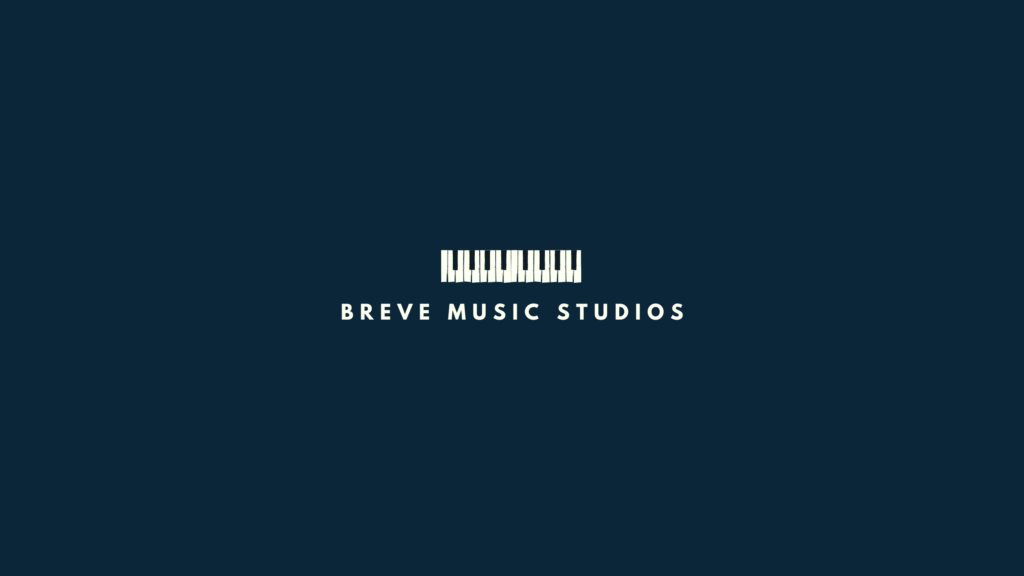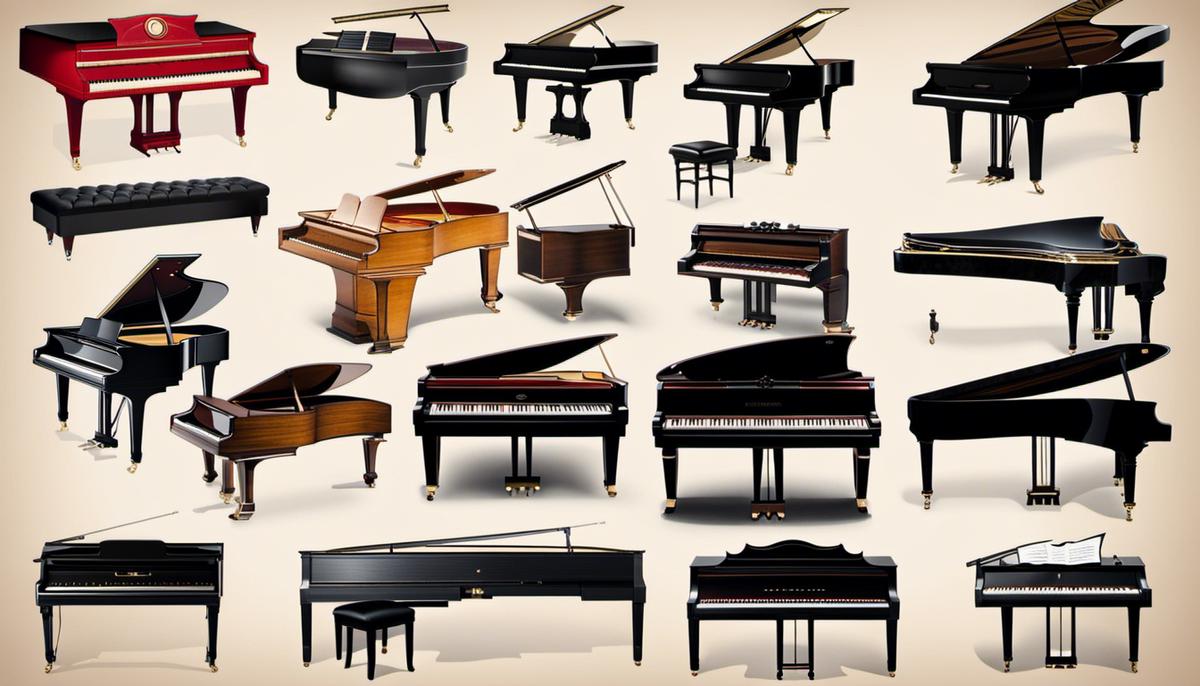Table of Contents
Introduction
The piano, an instrument that is central to the world of music, has a rich and intricate history that is as captivating as the melodies it produces. Emerging from its humble beginnings as a simple keyboard instrument such as the clavichord and harpsichord, the piano has not only evolved physically through the advancement of design and technology but has also profoundly influenced the development of music.
The journey of the piano’s origin from the pianoforte to the ‘gravicembalo col piano e forte’ by Bartolomeo Cristofori and through the inventive contributions from creators like John Broadwood and Ignaz Pleyel, is a testament to human ingenuity. Throughout the years, with the advent of the 20th century, the transformations that the piano has undergone have radically shaped the music scene. The instrument’s role in multiple genres, its impact on concert performances, and its status as a chief tool for composition reveal the piano’s undeniable importance in the realm of music.
Emergence and Early History of the Piano
Early Keyboard Instruments: Precursors to the Piano
Long before the piano made its debut, other stringed keyboard instruments such as the clavichord and the harpsichord were already in existence. The clavichord, a European instrument dating back to the 14th century, produced sound by striking brass or iron strings with small metal blades called tangents. Its tone could be modified by the player’s touch, but its overall volume was quite low, making it unsuitable for concert settings.
In contrast, the harpsichord, which became popular in the 15th century, was much louder. Its strings were plucked by quills when the player pressed the keys. The pitch of a harpsichord’s notes could not be altered by touch, resulting in less expressive capabilities than the clavichord. However, due to its volume, it was widely used for accompaniment in orchestra and opera performances.
The Birth of the Pianoforte
The invention of the modern piano is credited to Bartolomeo Cristofori, an Italian musical instrument maker. In the late 17th to early 18th century, Cristofori devised a new mechanism that combined facets of both the clavichord and the harpsichord, retaining their strengths while addressing their limitations.
His creation, the ‘gravicembalo col piano e forte’, was a revolutionary instrument which literally translates to ‘harpsichord with soft and loud.’ This reflected its unique ability to produce sounds with varying volumes based on how hard or softly the keys were struck – a major advancement compared to the restricted dynamic control its predecessors offered.
At the core of Cristofori’s design was the ‘escapement’ mechanism, a complex system of levers that allows the hammer to strike the string and then instantly retreat, letting the string vibrate freely. This was a marked difference from the harpsichord and clavichord, where the mechanisms that produced the sound remained in contact with the strings until the keys were released. The brilliance of Cristofori’s escapement laid the foundation for the modern piano’s hammer action.
The Evolution and Popularity of the Pianoforte
In the beginning, the pianoforte, despite its unique qualities, struggled to find widespread acceptance. This was in part due to its intricate construction which was not only costly but also less reliable than older, more established designs of musical instruments like the harpsichord and clavichord. Nonetheless, the pianoforte’s potential for dynamic control and expressivity began getting recognized by the mid-18th century, tipping the scales in its favor.
With the rise in popularity and manufacturing of the pianoforte, innovations became more prevalent in its design and fabrication. An English piano craftsman, John Broadwood, forged a sturdier version, equipped with heavier strings and a thick, resonant frame, in the early 19th century. The output was a richer, louder sound that complemented the grandeur of the emerging concert halls of that time well.
The simple piano—Cristofori’s invention—has indeed transformed and diversified over the years to provide us with the varied versions we enjoy today. Yet, the essence of its invention – the capacity to produce a variety of expressive melodies with the mere strike of a key – has remained impressively consistent.
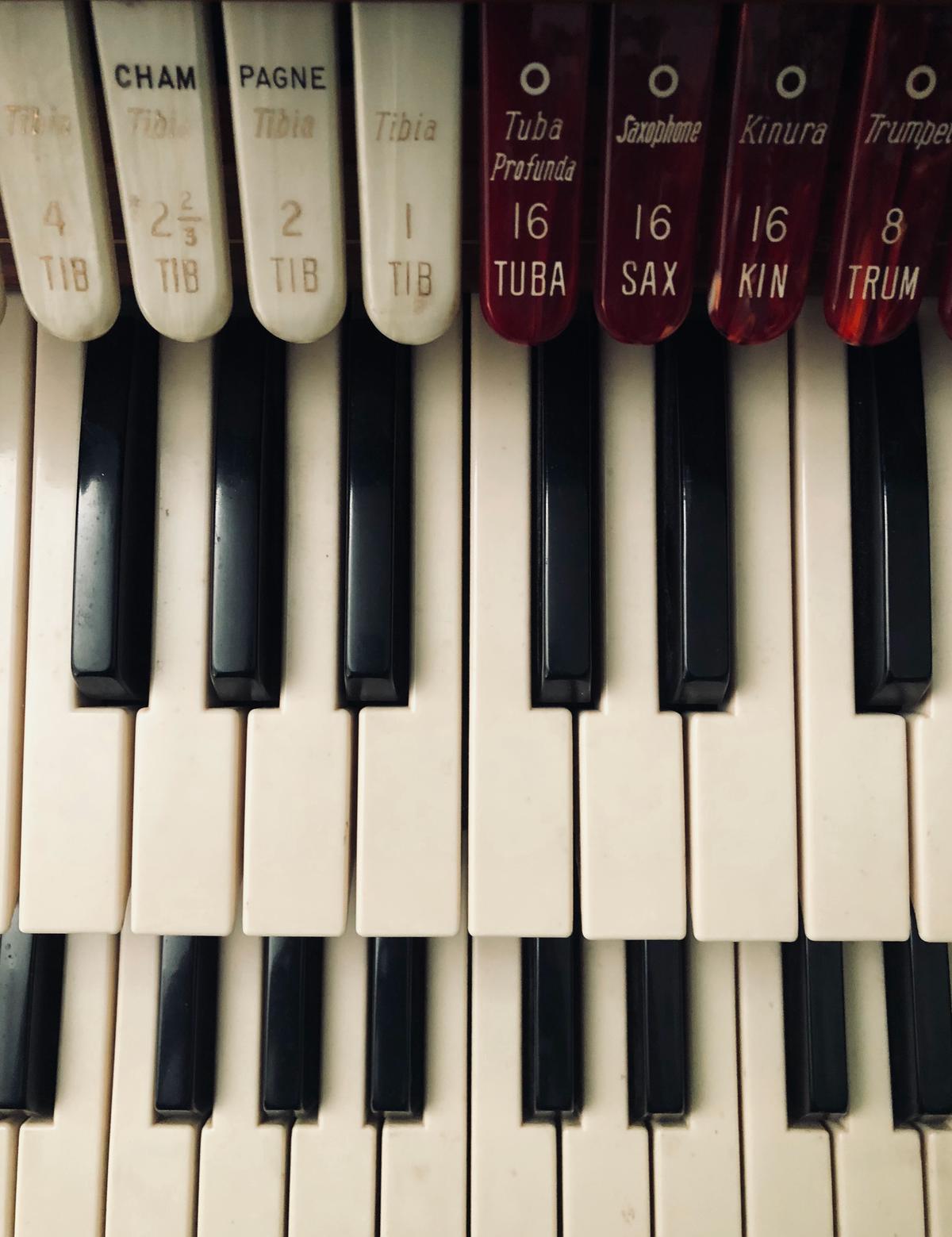
The Evolution of Piano Design and Technology
The Birth of the First Piano: Cristofori’s Innovation
The roots of the piano can be traced back to the dawn of the 18th century with Bartolomeo Cristofori, an Italian instrument artisan, leading the way. Recognized for creating the first-ever piano circa 1700-1709, he named this music-making device the pianoforte. The defining feature of this marvelous invention was its ability to render sounds at different volumes, adjusting to the force exerted by the player on the keys. This exceptional attribute distinguished it from other prevalent keyboard instruments of that time, such as the harpsichord, that were limited to a single volume.
The Rectangular Piano Model
In the 18th century, the rectangular design of the piano was introduced. Johann Schmidt of Salzburg, Austria, was one of the earlier pioneers of this design. Later, German piano maker Gottfried Silbermann improved on Schmidt’s design and started manufacturing square pianos. This design was favored because it was more compact and could fit into smaller homes, affordability and was more decorative.
The Transition to the Grand Piano
Towards the end of the 18th century, the grand piano design was introduced, mainly by English manufacturers. John Broadwood, an English piano maker, played a key role in the evolution of the grand piano. By 1795, Broadwood started to produce a large number of grand pianos that came with increased string tension and a heavier, more durable frame than earlier designs. These improvements resulted in a piano with a louder and richer sound.
Advancements in Materials and Technology
In parallel with the physical evolution of the piano, significant developments were also made in the materials used for building pianos. During the nascent stages of piano development, most parts were made of wood. Subsequently, around the 1820s, iron was introduced into the piano production process. This led to the development of cast iron frames, which allowed for an increase in string tension and thus, a louder sound.
Innovations by Ignaz Pleyel
Ignaz Pleyel, a French piano builder in the first half of the 19th century, also made substantial contributions to piano technology. Pleyel introduced a cross-stringing technique, where the strings of the lower notes were made to cross over and above the strings of the higher notes. This technique allowed for a larger soundboard providing longer resonance and overall, a more full-bodied sound. Pleyel’s innovation has been widely adopted and remains a key feature of the modern grand piano.
Technological Development in the 20th Century and Beyond
The modern pianos maintained the grand and upright designs enhanced by engineering and technological progress. The 20th century witnessed the introduction of the electric piano, which used electrical amplification to produce sound. Companies like Fender Rhodes and Wurlitzer excelled in this domain, providing musicians with portable and reliable instruments. The subsequent advent of the digital piano further revolutionized the architecture of pianos. These instruments use digital sampling or synthesis to replicate the sound of an acoustic piano, allowing them to be compact, lightweight, and affordable.
The annals of history bear witness to the dynamic evolution of the piano, from its humble beginnings to its modern digital incarnation. The leap from Bartolomeo Cristofori’s groundbreaking pianoforte to today’s tech-driven keyboards bespeaks the inexhaustible creativity, innovation, and technological advancement that have transformed the realm of music and sound.
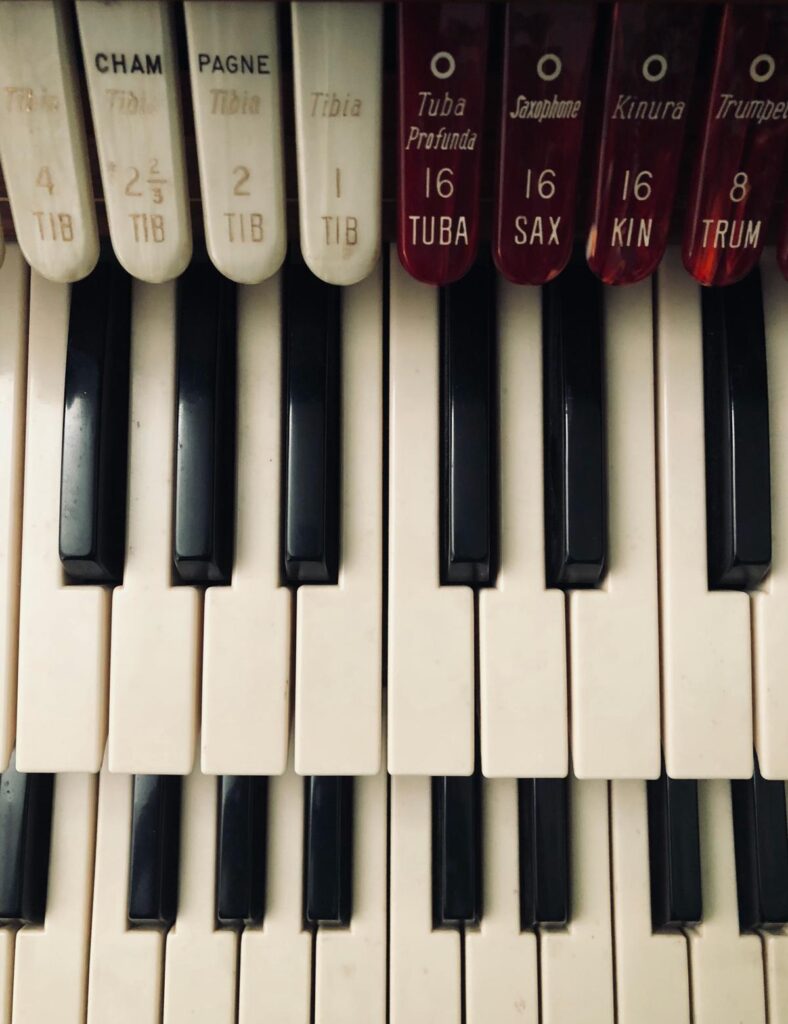
The Piano in the 20th Century
The Dawn of Player Pianos
As the 20th century emerged, the piano witnessed transformative changes that would forever modify the musical landscape. Perhaps the most pivotal among these was the early century invention of the player piano. These “automated” instruments came equipped with a pneumatic system capable of playing music programmed onto perforated paper rolls. This ingenious advancement made the rich repertoire of piano music accessible to people who lacked either the skill to play or the time to master the instrument.
The Rise of Electric Pianos
Another substantial advancement in the history of the piano was the dawn of electric pianos during the mid-20th century. As technology evolved, so too did the piano. Electric pianos, like the popular Fender Rhodes and Wurlitzer models, introduced musicians to a distinctly different sound in comparison to their acoustic counterparts. Instead of striking strings with hammers, these instruments employed a series of pickups that transferred the vibrations of tines into electrical signals, producing a warmer, more resonant tone. Electric pianos quickly found their place in various music genres such as jazz, pop, and rock due to their versatility and unique sound.
Digital Pianos and Synthesizers
By the latter part of the 20th century, advancements in technology led to the birth of digital pianos and synthesizers. Digital pianos were designed to emulate the sound and feel of an acoustic piano but with added features such as various instrument voices, MIDI compatibility, and headphone connectivity for silent practice. The Yamaha Clavinova, introduced in the early 1980s, is a prime example of a popular digital piano.
Synthesizers, on the other hand, were not merely imitators of the piano but instruments that could produce a vast array of sounds, from realistic acoustic piano tones to otherworldly synthesized sounds. Synthesizers, such as the Moog and Yamaha DX7, were a staple in a variety of music genres, including rock, pop, and electronic music.
Technological Influence on Piano Design and Production
Technology not only shaped the sound of the piano but also its design and production. Modern manufacturing processes allowed for the mass-production of pianos, making the instrument more accessible to people. Additionally, the use of new materials, such as plastics and composites, for certain components led to more durable and cost-effective pianos.
Changes in Piano Sound
The sound of the piano in the 20th century also evolved dramatically. The mechanical action of player pianos, the unique timbre of electric pianos, and the versatility of digital pianos and synthesizers led to a rich diversity of tonal characteristics that traditional acoustic pianos couldn’t offer. This greatly expanded the range of musical expression available to composers and performers, and led to the piano’s prominent role in a wide variety of music genres in the 20th century.
Traversing the journey from the player piano to the digital piano, the 20th century was a time of significant innovation for the piano. These advancements as technology evolved not only brought about a revolution in the design and manufacturing process of the piano, but also greatly enhanced its tonal richness and expanded its musical reach.
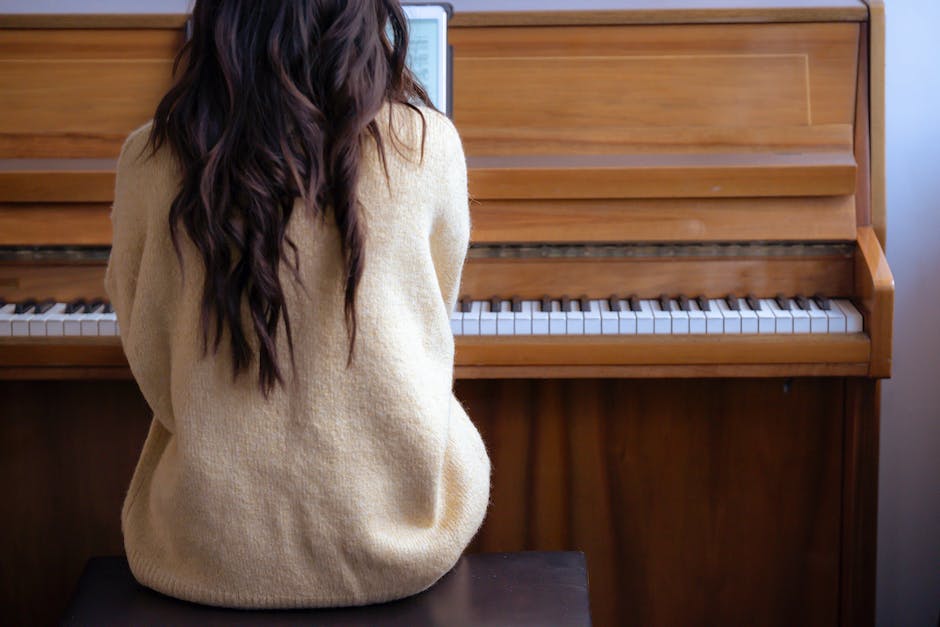
Impact of the Piano on Music
The Piano: A Catalyst in the Evolution of Music Genres
Playing a remarkable part in shaping various music genres, the piano, which came into existence in the early 18th century, became a common fixture in many households and concert halls by the mid-19th century. Owing to its versatility and its ability to produce a wealth of tones, the piano quickly positioned itself as an essential instrument within classical music. This is evident when examining the works of legends such as Mozart, Beethoven, and Schubert, whose sonatas, symphonies, and chamber music compositions frequently employ the use of the piano.
As we entered the 20th century, the piano acted as a key instrument in nurturing the birth of new music styles. The blues genre, for instance, relied heavily on the piano, with musicians like Jelly Roll Morton and Leroy Carr leaving their mark on the style of music. Similarly, jazz was also graced with supremely skilled piano virtuosos like Duke Ellington and Thelonious Monk, who increased the role of the piano within ensemble performances.
The Piano in Concert Performances
The development of the piano also has a profound impact on concert performances. The piano’s extensive range, from the lowest bass notes to the highest treble notes, enables it to cover the breadth of an orchestra. This capability led to pianists becoming star soloists in concert performances. The tradition of virtuosic piano concertos became popular in the 19th century, with works by composers like Rachmaninoff and Grieg.
Moreover, the piano found its place in smaller ensembles and orchestras, where it often carries the melodic line or supports the harmonic structure. The versatility of the piano and its ability to seamlessly blend with other instruments have made it an essential instrument in a myriad of ensemble settings, from symphony orchestras to jazz trios.
The Piano in Music Composition
As a compositional tool, the piano has helped shape the world of classical and contemporary music. Composers favored the piano due to its ability to emulate a full orchestra, thus allowing them to experiment with harmonies and melodies. Beethoven, Chopin, and Brahms are a few historic figures who often used the piano while composing.
In contemporary eras, the piano’s versatility and fullness of sound have made it a preferred instrument in popular music genres. Artists like Elton John, Billy Joel, and Alicia Keys used the piano as the basis for their songwriting process.
The Piano’s Universal Appeal
The piano’s universal appeal extends beyond its importance as a performer’s instrument or composer’s tool. It stands as a symbol of refinement and sophistication. Also, learning the piano has been associated with cognitive development, showing positive impacts on children’s spatial-temporal skills, mathematics, and even IQ.
Despite technological advances and the advent of electronic music, the piano still holds a unique place in music education and performance. Its history intertwines with the evolution of Western music, and its role continues to shape the sound of music across various genres. It stands as a testament to the enduring power of acoustic instruments in a digital age.
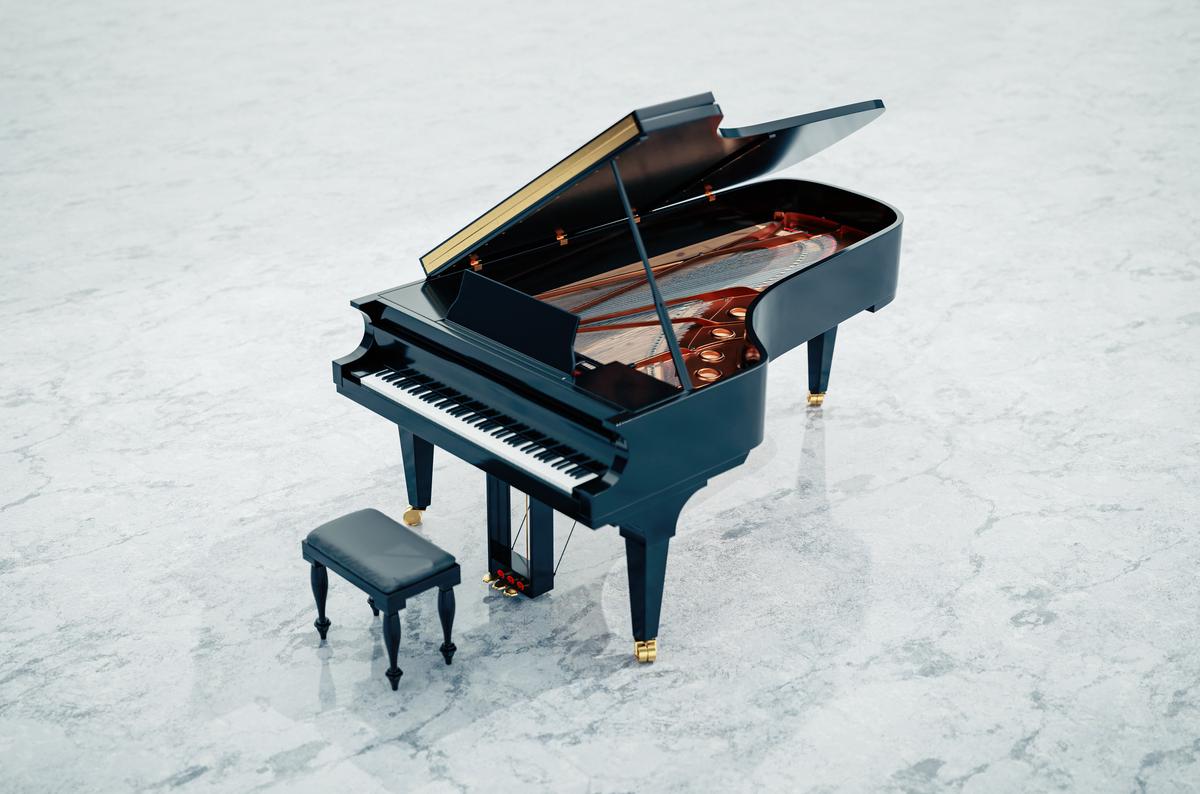
Conclusion
As we reflect on the history of this remarkable instrument, we recognize the significant strides that have been taken to create the modern piano we know and love today. From the early constructions by Cristofori to the modern digital pianos, each advancement has revolutionized the sound that the piano produces and how it is played.
Moreover, the piano’s influence has transcended beyond the boundaries of mere technical developments, making a profound impact on the music landscape. Its universal appeal and prominent role across multiple genres is a clear testament to its versatility. Today, the piano remains a revered instrument, continuing to inspire both performers and listeners alike. The story of the piano is one of continuous evolution, a testimony to our unending quest for musical expression and innovation.
Additional Reading
Take some time to check out our other articles:
Breve Music Studios publishes music to Spotify, YouTube Music, Amazon Music and more. Follow our pages on Facebook, Instagram, Twitter, TikTok, and YouTube.
Listen to our ensembles: Breve Orchestra, Breve Music Ensemble, Breve Low Brass Ensemble, Breve Woodwind Ensemble, and Jermaine Harris on Spotify.
